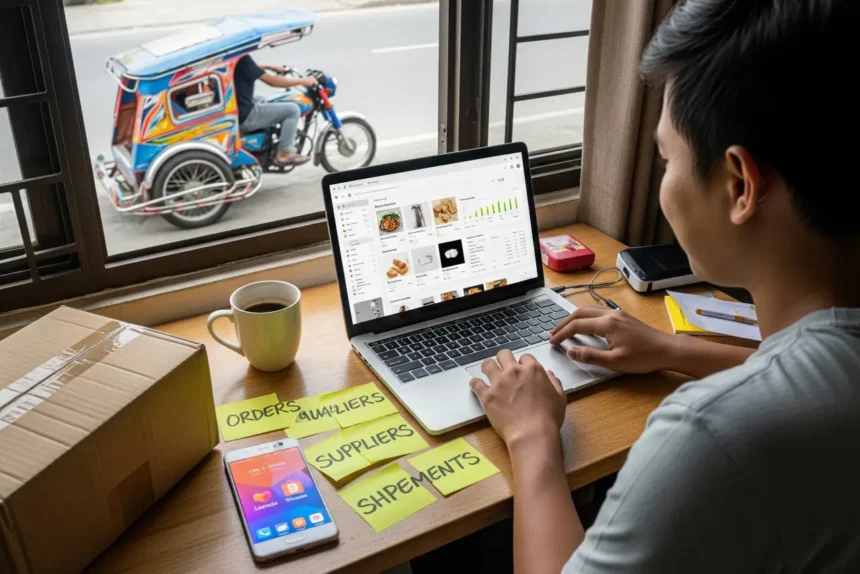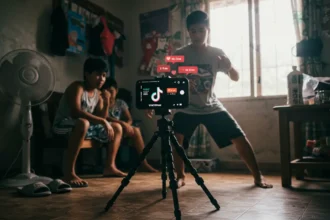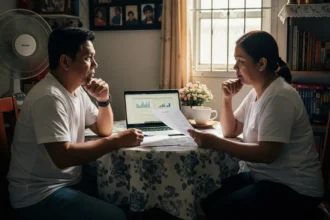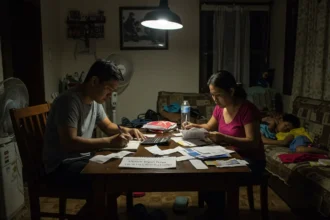Picture this: A business that runs from your laptop. A store that serves customers from Aparri to Jolo. An income stream that doesn’t require a single box of inventory cluttering your home.
- 📦 What is Dropshipping? (The Simple, No-Jargon Guide)
- 🔍 Step 1: How to Find a Winning Product That Actually Sells
- 🤝 Step 2: Choosing a Supplier You Can Trust (Your Reputation Depends on It)
- 🛍️ Step 3: Picking the Best Platform for Filipino Dropshippers
- 🎨 Step 4: Branding That Makes Filipinos Click “Add to Cart”
- 💵 Step 5: Pricing Strategies to Protect Your Profits
- 💳 Step 6: Payment Methods Filipinos Actually Trust
- 📢 Step 7: How to Market Your Store Without Burning Cash
- 📦 Step 8: Turning First-Time Buyers into Loyal Customers
- ❓ Frequently Asked Questions (FAQ)
- 🚀 You’re Not Just Selling Products, You’re Building a Business
For countless Filipinos in 2025-from OFWs building a nest egg to 9-to-5ers craving a profitable side-raket-this isn’t just a fantasy. It’s the powerful reality of dropshipping in the Philippines. It’s the business model built for the digital age, allowing you to focus on what truly matters: marketing and making sales.
But navigating the world of suppliers, winning products, and the unique habits of the Filipino online shopper takes a map. Consider this guide your official roadmap. We’ll show you how to start smart, avoid the common pitfalls, and build a dropshipping business with the potential to change your life.
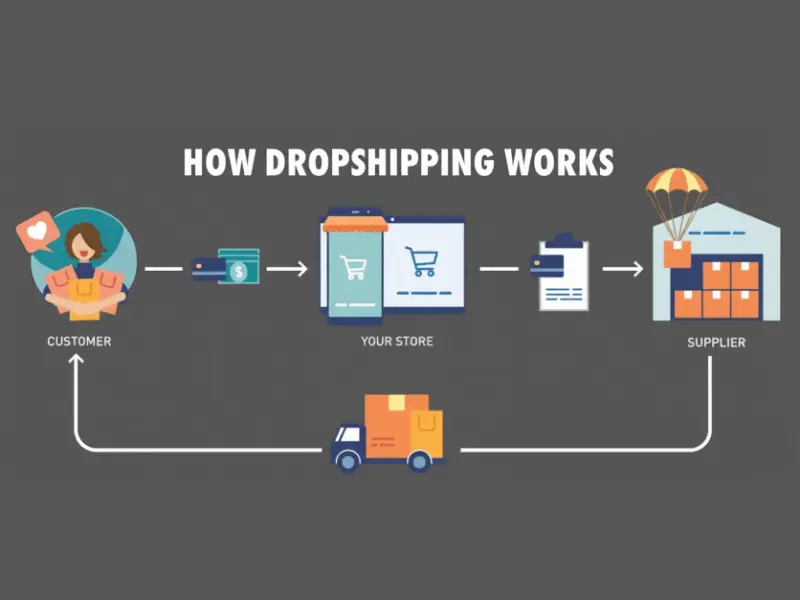
📦 What is Dropshipping? (The Simple, No-Jargon Guide)
At its core, dropshipping is one of the simplest ways to run an online store:
-
A customer buys a product from your store.
-
You forward the order and payment details to your supplier.
-
The supplier ships the product directly to your customer.
-
You keep the profit-the difference between what the customer paid and what you paid the supplier.
That’s it. No warehouses. No stocking boxes in your sala. No worrying about delivery trucks.
Why Dropshipping Appeals to Filipinos
-
Low capital – You don’t need millions to start. A small ad budget (₱5K–₱10K) can get you going.
-
Flexible setup – You can manage everything with just a laptop and Wi-Fi.
-
No inventory risk – You only pay for products after customers place an order.
-
Scalable – If one product sells well, you can quickly add more without new overhead.
The Catch (What You Need to Know Before Starting)
Dropshipping is simple, but not “easy money.” Here are the realities:
-
Competition is tough – Many sellers carry the same products. Your edge will come from marketing and branding.
-
Suppliers make or break you – If they ship late or send poor-quality items, your reputation takes the hit.
-
Customer expectations in the Philippines are high – Pinoys love COD and same-week delivery. If you’re sourcing from abroad, delays can hurt your sales.
Why 2025 is the Right Time to Start
The Philippine e-commerce market keeps growing-thanks to platforms like Shopee, Lazada, and TikTok Shop. With more buyers shifting online and payment methods like GCash and COD now mainstream, there has never been a better time to test your first profitable dropshipping business in the Philippines.
👉 Now that you know what dropshipping really is-and what it isn’t-your next step is to find your niche and your first winning product.
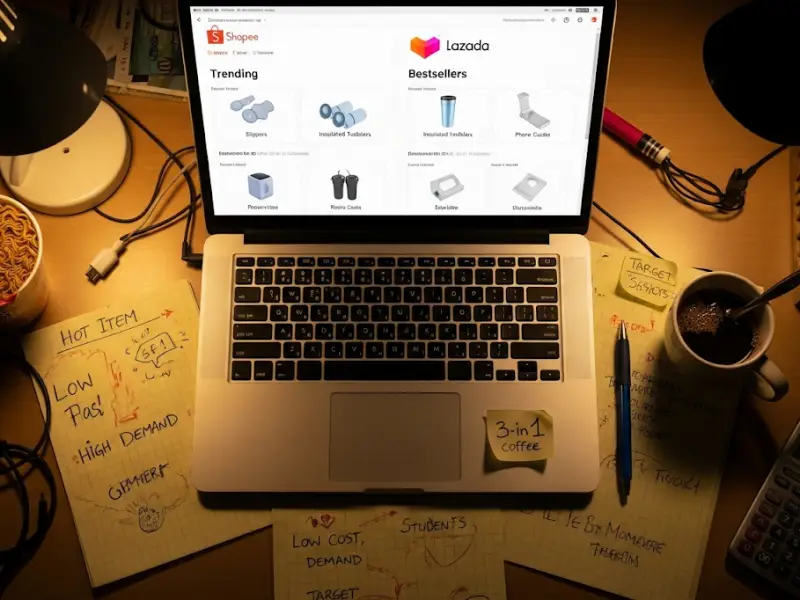
🔍 Step 1: How to Find a Winning Product That Actually Sells
In dropshipping, your product is your weapon. You can have the slickest website and the best ads, pero kung mali ang produkto mo, no one will buy. That’s why your first move is to choose a winning product-something that Filipino customers actually want, need, and are willing to pay for.
Why You Shouldn’t Sell “Everything”
One of the biggest mistakes beginners make is trying to sell every trending item they see. The truth? That just makes you another generic online shop. The smarter approach is to focus on a niche-a specific product category that you can understand and market better than others.
When you have a niche, it’s easier to:
-
Speak directly to your target customer.
-
Run more effective ads (cheaper, more focused).
-
Build trust and eventually a brand.
Niche Ideas That Work in the Philippines
Here are some product categories that click with Filipino buyers:
-
Home organization – space-saving items for condo and apartment living.
-
Pet accessories – Pinoys are fur parents at heart, willing to spend for their dogs and cats.
-
Eco-friendly products – reusable straws, bamboo toothbrushes, tote bags for the “sustainable lifestyle.”
-
Plantito/Plantita essentials – pots, grow lights, indoor gardening tools.
-
Kitchen gadgets – unique tools for home bakers and aspiring chefs.
The “Litmus Test” for Winning Products
Before you commit, ask yourself these three questions:
-
Does it solve a problem or feed a passion?
– Example: A space-saving shoe rack for small condos = problem solved. -
Is it hard to find in local malls?
– If customers can get it in SM or Divisoria, they won’t wait for online shipping. -
Does it have a “wow” factor for social media?
– Can you imagine a TikTok video where this product grabs attention in 5 seconds?
If you can say yes to at least two of these, you may have a product worth testing.
📊 10 Examples of Niches + Why They Work in the Philippines
| Niche | Example Products | Why It Works in PH |
|---|---|---|
| Home Organization | Collapsible storage boxes, space-saving racks, drawer organizers | Many Filipinos live in condos or small homes; practical solutions sell well. |
| Pet Accessories | Stylish pet beds, automatic feeders, grooming kits | Pinoys treat pets like family (fur babies), making this a growing market. |
| Eco-Friendly Items | Bamboo toothbrushes, reusable straws, tote bags | Sustainability is trendy, especially among Gen Z and millennials. |
| Plantito/Plantita | Indoor pots, grow lights, gardening kits | The gardening craze continues; hobbyists are willing to spend for their plants. |
| Kitchen Gadgets | Air fryer accessories, baking tools, multifunctional slicers | More Pinoys are cooking and baking at home; kitchen hacks are always in demand. |
| Fitness & Wellness | Resistance bands, yoga mats, protein shakers | Health-conscious Filipinos are investing in affordable fitness gear post-pandemic. |
| Baby & Kids Items | Educational toys, baby carriers, feeding sets | Growing young families want affordable but high-quality items for children. |
| Motorcycle Accessories | Phone holders, helmets, LED lights | With motorcycles being the main transport for many Pinoys, accessories are a steady market. |
| Affordable Fashion | Trendy tops, streetwear, minimalist jewelry | Filipinos love OOTD culture, TikTok-driven trends, and affordable fashion finds. |
| Tech Accessories | Phone cases, power banks, ring lights | With high smartphone usage and online creators, these products always have demand. |
Pro Tip for Beginners
Start with 1–3 products only. This keeps your marketing budget focused, and it’s easier to track what works. Once you find your “panalo” product, you can expand. With a niche and a product in mind, your next big step is finding the right supplier-because your store is only as good as the people who fulfill your orders.
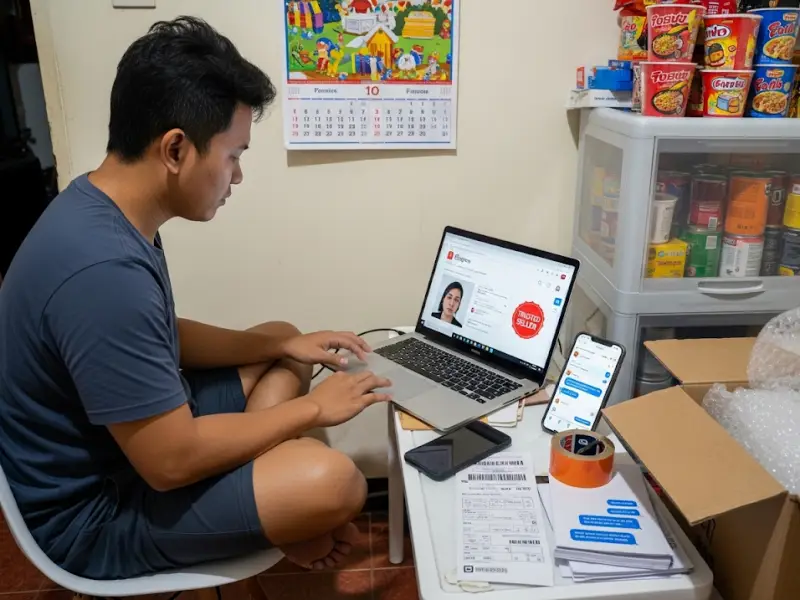
🤝 Step 2: Choosing a Supplier You Can Trust (Your Reputation Depends on It)
Here’s the hard truth: in dropshipping, your supplier is your lifeline. They control the product quality, the shipping speed, and ultimately your customer’s satisfaction. Kahit gaano kaganda ang ads mo, if the item arrives late or damaged, guess who gets the blame? Ikaw.
That’s why finding the right supplier is not just important-it’s everything.
Local Suppliers (Best for Beginners)
Why they work for Filipinos:
-
Faster shipping (2–5 days instead of weeks).
-
Easier communication (Tagalog/English, local time zones).
-
COD options (the most trusted payment method in PH).
Where to find them:
-
Facebook groups like “Dropshipping Philippines” where resellers share supplier contacts.
-
Reseller programs on Shopee & Lazada-some sellers openly offer dropship partnerships.
-
Fulfillment providers (e.g., Fulfillment PH, Dropify, or similar PH-based services).
International Suppliers (AliExpress, Alibaba, etc.)
Why they’re attractive:
-
Wide product selection (almost anything you can think of).
-
Lower product costs (good margins if you can wait).
The catch:
-
Shipping times (2–4 weeks is common).
-
Customs delays = angry customers.
-
Communication gaps with suppliers in China.
👉 If you go this route, be transparent. Let your buyers know shipping will take weeks-set expectations, or risk bad reviews.
Supplier Red Flags 🚩
Watch out for these signs:
-
No clear product catalog or price list.
-
Very slow or no replies to inquiries.
-
No return or replacement policy.
-
Negative feedback from other resellers.
If you see these, wag ka na tumuloy.
Pro Tip for Pinoy Dropshippers
Start with local suppliers first to build trust with customers, then expand to international products once you’ve learned the ropes. This way, you minimize headaches and build a solid reputation early on. Once you’ve secured a reliable supplier, the next step is choosing where to actually sell your products-whether that’s your own website, Shopee/Lazada, or even TikTok Shop.
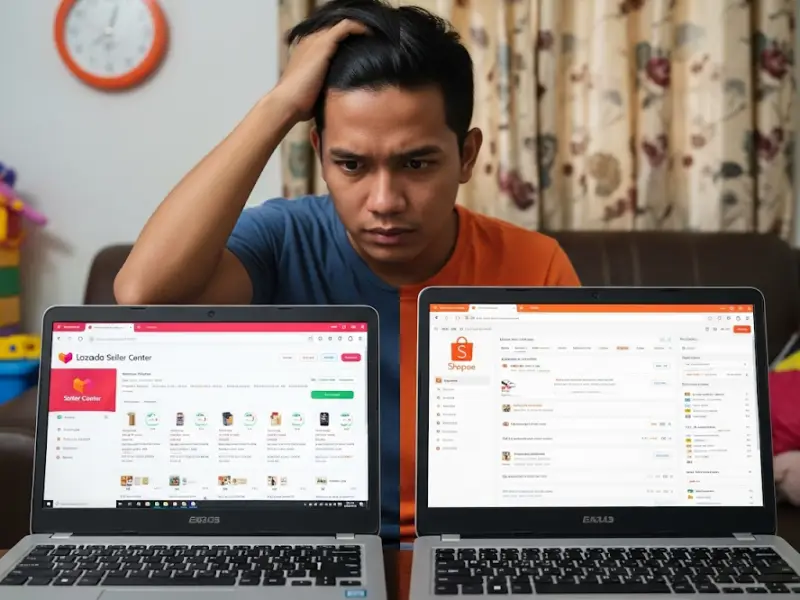
🛍️ Step 3: Picking the Best Platform for Filipino Dropshippers
Now that you’ve found your product and supplier, the next big decision is where to sell. Think of it like choosing the “mall” where you’ll open your store. The platform you pick will shape how customers see you-and how much you’ll spend on fees, ads, and branding.
Shopify – The Professional Route
If you want full control and dream of building a real brand, Shopify is the way to go.
-
Pros:
-
Your own website (yourstore.com)-no competing side-by-side with other sellers.
-
Access to powerful apps for marketing, analytics, and automation.
-
Best for long-term growth.
-
-
Cons:
-
Monthly subscription fee (~$29 or around ₱1,600+).
-
You need to drive your own traffic (ads, SEO, influencers).
-
👉 Shopify is ideal if you see yourself growing beyond a side hustle into a legit negosyo brand.
Shopee & Lazada – The Beginner Route
These marketplaces are like SM Malls of e-commerce-Pinoys already trust them.
-
Pros:
-
Millions of active Filipino shoppers.
-
Built-in trust: COD, vouchers, and “Free Shipping” promos.
-
Easier to set up than Shopify.
-
-
Cons:
-
Highly competitive-you’re side-by-side with dozens of sellers offering the same item.
-
Platform fees and commissions eat into your margins.
-
Limited branding opportunities; your shop looks like everyone else’s.
-
👉 Shopee and Lazada are perfect for testing the waters if you’re new to e-commerce and want sales faster.
TikTok Shop – The Viral Route
If you’re targeting Gen Z and millennials, this is your battlefield.
-
Pros:
-
TikTok is now the #1 product discovery platform in PH.
-
Viral short videos = free marketing if you hit the algorithm right.
-
Seamless shopping: buyers can purchase while watching.
-
-
Cons:
-
Requires creativity-videos must be engaging, not just plain product shots.
-
Trends change quickly, so you need to adapt fast.
-
Still new-policies and systems are evolving.
-
👉 TikTok Shop is best for products with a strong “wow factor”-those that look great in quick demos or unboxing clips.
📊 Comparison of Platforms for Filipino Dropshippers
| Platform | Pros | Cons | Best For |
|---|---|---|---|
| Shopify | Full control of branding, own domain (yourstore.com), access to apps for automation & marketing | Monthly fees (~₱1,600+), you need to drive your own traffic via ads/SEO | Serious entrepreneurs who want to build a long-term brand |
| Shopee & Lazada | Massive customer base, trusted platforms (COD, vouchers, free shipping), fast setup | High competition, platform fees, limited branding | Beginners testing products and aiming for faster sales |
| TikTok Shop | Viral potential, seamless shopping inside TikTok app, perfect for video-based product discovery | Requires creative video marketing, trends change fast, still evolving in PH | Gen Z/Millennial audiences and products with strong “wow” factor |
💡 Pro Tip: Many successful Pinoy dropshippers use a hybrid approach-they test products on Shopee/Lazada, scale them on TikTok, then eventually build a Shopify site for long-term branding. Once your platform is chosen, the next step is to make your store look credible and appealing-because without strong branding, buyers will just scroll past.
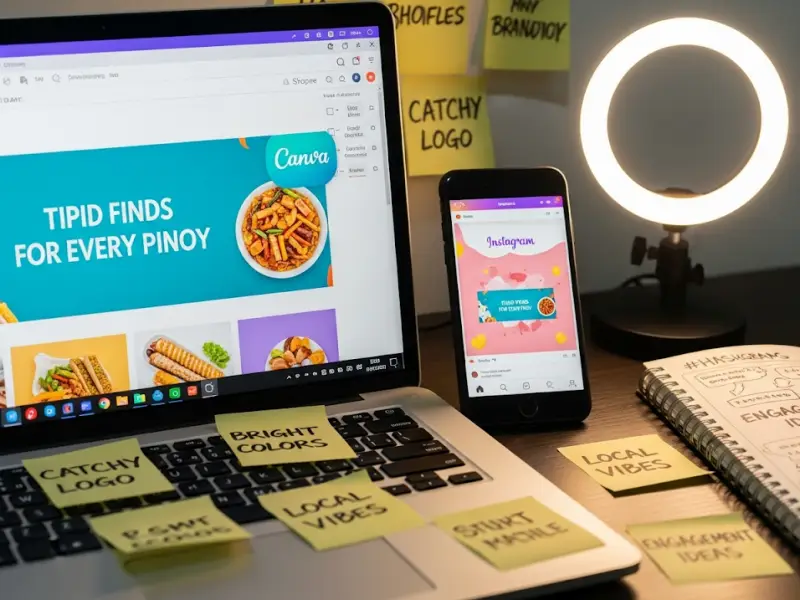
🎨 Step 4: Branding That Makes Filipinos Click “Add to Cart”
In a crowded online marketplace, branding is what makes customers choose you over the dozens of other sellers offering the same item. Sa madaling salita: kung hindi ka mukhang credible, buyers will scroll past you and buy from someone else.
Choose a Catchy and Trustworthy Store Name
Your store name is the first impression.
-
Keep it simple and easy to remember.
-
Avoid random numbers and special characters (e.g., “Shop1234_89” screams amateur).
-
Tie it to your niche: “EcoLife PH” for eco-friendly items, or “Pawsome Finds” for pet accessories.
Design a Clean, Professional Logo
You don’t need to hire a pricey designer. Tools like Canva let you create a neat, modern logo in minutes. A professional-looking logo instantly adds credibility-like saying “legit kami.”
Upgrade Your Product Photos
Suppliers usually provide photos, but here’s the secret:
-
Use them as a base, but make small edits (remove cluttered backgrounds, add text overlays with Filipino-friendly captions like “Perfect for Condos”).
-
Show products in real-life use-Filipinos love seeing “paano ginagamit” rather than just plain product shots.
-
If possible, order one sample and take your own photos for extra trust.
Write Product Descriptions That Speak to Filipinos
Skip the boring technical specs. Translate them into benefits that matter to your buyer.
-
Instead of: “Material: Stainless Steel, 500ml capacity.”
-
Say: “Matibay, hindi kinakalawang, at sakto sa baon or coffee on the go.”
Use simple, relatable language. Remember: most Pinoy buyers shop on mobile, so keep it short, scannable, and convincing.
Add Trust Signals Everywhere
Filipino buyers are skeptical, especially with online shops popping up daily. To gain their trust:
-
Highlight COD and secure payments (GCash, Maya).
-
Add reviews or testimonials (even from your test customers).
-
Post FAQs to answer common concerns (“How long is shipping?” “Do you accept COD?”).
💡 Pro Tip: Branding isn’t just about looking pretty. It’s about building trust and standing out in a sea of sellers. Even small tweaks-like better photos or Filipino-style product descriptions-can double your sales. With your branding polished, the next big challenge is money: pricing for profit and setting up payments that Filipino buyers actually trust.
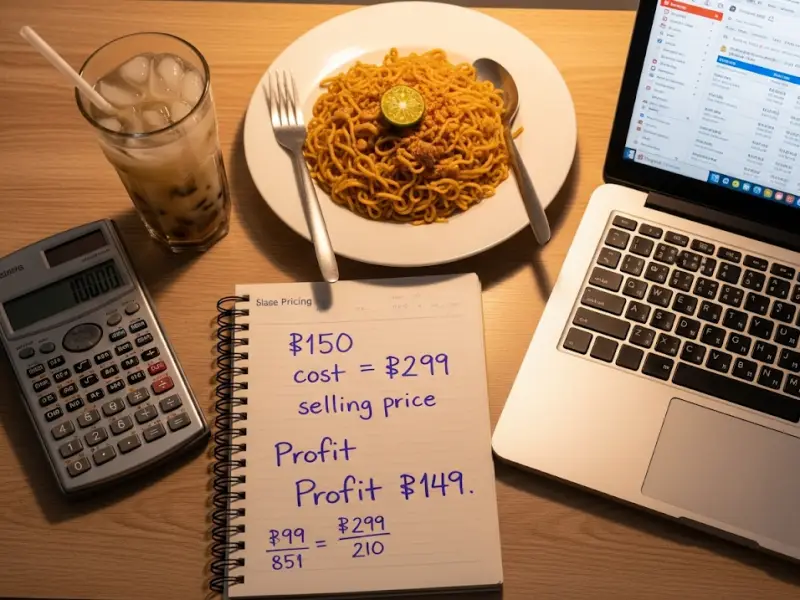
💵 Step 5: Pricing Strategies to Protect Your Profits
Here’s the truth: many new dropshippers quit not because they didn’t get sales, but because they didn’t price correctly. Remember, you’re not just covering product cost-you’re covering ads, platform fees, payment processing, and still leaving room for profit.
The Basic Formula for Dropshipping Pricing
Use this as a starting point:
Retail Price = (Product Cost + Shipping Fee) × 2.5 (or 3)
Why? That multiplier gives you enough buffer to:
-
Pay for Facebook or TikTok ads
-
Absorb platform fees (Shopee/Lazada commissions, Shopify apps, payment gateway fees)
-
Leave you with a healthy profit
👉 Example:
-
Product cost from supplier: ₱300
-
Shipping to customer: ₱100
-
Total cost = ₱400
-
Retail price = ₱400 × 2.5 = ₱1,000
-
Your margin = ~₱600 per sale (before ad spend).
Don’t Join the “Presyo War”
A common newbie mistake is to keep lowering prices just to beat the competition. Ang ending? You work hard but barely earn. Instead of undercutting, stand out with branding:
-
Better photos and descriptions.
-
Faster customer replies.
-
Offering COD and reliable tracking.
Filipinos will pay extra for peace of mind.
Adjust for Your Platform
-
Shopee/Lazada: Add at least 10–15% more to cover commissions and promos.
-
Shopify: Factor in $29 monthly fee (₱1,600+) plus app costs.
-
TikTok Shop: Margins can be thinner, but viral sales volume makes up for it.
📊 Pricing Example for a Dropshipping Product
Scenario: You’re selling a product that costs ₱300 from your supplier, with ₱100 shipping fee.
| Platform | Cost Breakdown | Retail Price (Suggested) | Fees/Deductions | Estimated Profit per Sale |
|---|---|---|---|---|
| Shopee/Lazada | ₱300 product + ₱100 shipping = ₱400 | ₱1,000 | ~₱450–₱500 (before ads) | |
| Shopify | ₱300 product + ₱100 shipping = ₱400 | ₱1,000 | $29 monthly fee (~₱1,600), plus 2–3% payment fee per transaction | ~₱500 (before ads & fixed fees) |
| TikTok Shop | ₱300 product + ₱100 shipping = ₱400 | ₱950–₱1,000 | Small commission + ad costs for TikTok boosting | ~₱400–₱500 (before ads) |
Pro Tip 💡
Test different price points. Sometimes raising your price actually boosts sales because Filipinos think, “Ah, mas legit ‘to, hindi cheap quality.” Once you know your pricing sweet spot, the next step is making sure Filipino customers can actually pay you-and that means offering the payment methods they trust.
💳 Step 6: Payment Methods Filipinos Actually Trust
You’ve priced your products for profit-but unless customers can easily pay, you won’t get sales. In the Philippines, buyers are picky with payment methods. They want options that feel safe, convenient, and familiar.
1. GCash & Maya – The Non-Negotiables
Digital wallets are now everyday essentials in PH.
-
Why they matter: Fast, trusted, and widely used by Filipinos.
-
How to offer them: If you’re on Shopify, integrate via PayMongo or Xendit. On Shopee/Lazada/TikTok, they’re already built in.
-
Pro Tip: Highlight “We accept GCash/Maya” in your product listings-it instantly builds trust.
2. Credit & Debit Cards – Still Important
Not every Filipino has a card, but for those who do, it’s a must.
-
How to enable: Shopify integrates with Stripe, PayMongo, or DragonPay. Marketplaces like Lazada/Shopee already cover this.
-
Why it helps: Attracts higher-income buyers who prefer cards for convenience or cashback.
3. COD (Cash on Delivery) – The King of PH Payments
Filipinos love COD-it feels safer because they only pay once the item arrives.
-
Why it matters: Many Pinoys won’t risk pre-paying, especially with unfamiliar online shops.
-
How to offer: Most local suppliers and Shopee/Lazada/TikTok Shop provide COD. If you’re on Shopify with international suppliers, it’s harder (or impossible) to offer.
-
Pro Tip: If you can’t offer COD, be transparent. Add a line: “We’re prepaid-only for now, but payments are secured through GCash/PayMongo.”
4. Bank Transfers – Optional but Useful
Some older customers or small business clients prefer bank deposits. It’s not essential, but listing it as an option can catch extra sales.
💡 Takeaway: The more convenient your payment methods, the higher your conversion rate. At a minimum, make sure you have GCash/Maya. If possible, add COD for maximum trust. Once payments are in place, it’s time to focus on marketing your store without overspending-because traffic is the fuel of any dropshipping business.
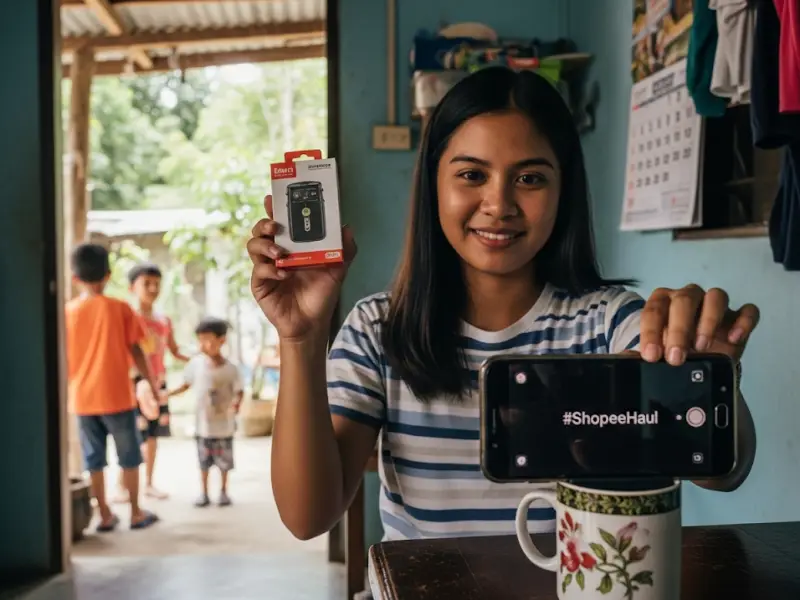
📢 Step 7: How to Market Your Store Without Burning Cash
You can have the best product and the cleanest store design, pero kung walang nakakakita, walang sales. Marketing is the fuel of your dropshipping business-but you don’t need to burn thousands right away. With smart, budget-friendly strategies, you can reach Pinoy buyers and start generating sales.
Start Small with Facebook & Instagram Ads
Facebook is still king in the Philippines.
-
Budget: As low as ₱200–₱300/day to test products.
-
Targeting Tip: Don’t just target “everyone in PH.” Narrow it down by interest. Example: selling pet beds? Target “dog owners” and “pet accessories.”
-
Pro Tip: Test 2–3 ad creatives (different photos or videos) with small budgets, then scale the one that works.
Leverage TikTok for Viral Reach
TikTok is now the go-to for product discovery in PH.
-
Content ideas:
-
Short demo videos (“Watch this foldable rack transform a messy room in 10 seconds”).
-
Unboxing clips (Filipinos love “sulit” reactions).
-
Trend-jacking (use trending sounds with your product demo).
-
-
Why it works: Even with zero followers, one good video can reach thousands and drive instant sales.
Work with Micro-Influencers (Affordable Collabs)
Forget ₱100K celebrity endorsements. In the Philippines, micro-influencers (1K–10K followers) drive better results.
-
More affordable (some accept free products).
-
Their followers trust them more-they feel authentic.
-
Perfect for niche items like eco-products, kitchen gadgets, or plant accessories.
Organic Marketing Still Works
Don’t underestimate free methods:
-
Post consistently on your Facebook Page and TikTok.
-
Join niche Facebook groups (ex. Plantita PH if selling garden tools) and provide value before promoting.
-
Encourage happy customers to post reviews and tag your store. Word of mouth in the Philippines is powerful.
📊 Sample Marketing Budget Breakdown (₱5,000 Starter Plan)
| Channel / Activity | Budget Allocation | Example Use | Why It Works in PH |
|---|---|---|---|
| Facebook & Instagram Ads | ₱3,000 (₱100–₱200/day for 15–30 days) | Test 2–3 ad creatives (images/videos) targeting niches like “Pet Owners” or “Condo Living” | Still the biggest social platform in PH, perfect for product testing |
| TikTok Content Boosting | ₱1,000 | Promote 1–2 videos that already get organic traction | TikTok is the #1 product discovery app in PH-cheap viral reach |
| Micro-Influencer Collabs | ₱500 | Send free products or small cash incentives to niche influencers (1K–10K followers) | Authentic recommendations from relatable Pinoy influencers build trust |
| Organic Content Tools | ₱500 | Canva Pro for better visuals, CapCut Pro for editing videos | Polished visuals and engaging short videos increase conversion |
💡 Pro Tip: Start with one marketing channel, get it working, then expand. For most Pinoy dropshippers, that means Facebook Ads for testing + TikTok content for scaling. Once you’ve started driving traffic and sales, your next challenge is keeping customers happy-because repeat buyers are cheaper and more profitable than chasing new ones.
📦 Step 8: Turning First-Time Buyers into Loyal Customers
Getting that first sale feels amazing. Pero tandaan: it costs more to win a new customer than to keep an old one. If you want your dropshipping business in the Philippines to be profitable, your goal is not just to sell once-but to make buyers come back again and again.
Deliver a Smooth Order Experience
-
Acknowledge orders right away. Send a confirmation message via email, SMS, or Messenger.
-
Update customers on shipping. Share tracking details as soon as they’re available.
-
Say thank you. A simple “Salamat po for trusting us!” goes a long way in building goodwill.
Make Customer Service Your Edge
In the Philippines, buyers value magandang serbisyo as much as low prices.
-
Respond within a few hours (or faster, if possible).
-
Be polite and empathetic, even with complaints.
-
Offer easy returns/refunds if something goes wrong-this builds trust and sets you apart from fly-by-night shops.
Collect Feedback and Reviews
-
Politely ask satisfied customers to leave a review or post about their purchase.
-
Offer a small incentive like a discount code on their next order.
-
Use positive reviews in your product listings and ads as social proof.
Build Loyalty Beyond Discounts
Don’t just slash prices to keep customers. Instead:
-
Create bundles (e.g., buy 2 organizers, get a discount).
-
Offer exclusive deals to repeat customers.
-
Build a small email list or Messenger group where you can announce new products.
💡 Pro Tip: Loyal customers not only buy again-they also become your best marketers. In Filipino culture, word of mouth (“Uy, dito ka bumili, legit!”) is powerful. Treat your first-time buyers well, and they’ll bring in their friends and family.
❓ Frequently Asked Questions (FAQ)
-
Is dropshipping legal in the Philippines?
Yes. Dropshipping is legal in the Philippines as long as you comply with e-commerce and consumer protection laws. If you’re scaling, you may need to register with DTI or BIR for tax purposes. -
How much capital do I need to start?
You can technically start with ₱0 if you already have free platforms, but realistically, set aside ₱5,000–₱20,000 for ads, store setup, and testing products. -
Do I need a DTI/SEC business permit?
Not at the beginning. But once you scale and earn consistently, registering with DTI (sole proprietorship) or SEC (corporation/partnership) plus BIR is recommended for legitimacy. -
Can I do dropshipping on Shopee or Lazada?
Yes. Many suppliers on these platforms offer dropship arrangements. Just remember, you’ll compete directly with other sellers offering the same products. -
What about Shopify-worth it for Filipinos?
Shopify is best if you plan to build a long-term brand. It has monthly fees (~₱1,600+) but gives you full control of your store, unlike Shopee or Lazada. -
How long before I get my first sale?
It depends. Some get sales in their first week with the right product + ads. For most beginners, expect 2–6 weeks of testing products and marketing before consistent sales. -
What products sell best in PH dropshipping?
Items with wow factor or that solve daily Filipino problems: home organizers, pet items, kitchen tools, eco-products, and affordable fashion. -
How do I avoid scam suppliers?
Stick to reputable sources: local fulfillment services, vetted Lazada/Shopee resellers, or verified AliExpress sellers. Avoid suppliers with poor communication, no return policy, or suspiciously low prices. -
Can I offer COD if my supplier doesn’t?
COD is king in PH e-commerce. If your supplier can’t support COD, manage buyer expectations by highlighting prepaid options (GCash/Maya) and emphasizing security and fast delivery. -
Is dropshipping still profitable in 2025?
Yes-but only if you treat it as a real business. With more competition, your edge will come from choosing the right niche, strong branding, and excellent customer service.
🚀 You’re Not Just Selling Products, You’re Building a Business
Starting a dropshipping business in the Philippines isn’t just about making your first sale-it’s about learning the ropes of e-commerce, building trust with Filipino buyers, and creating a system that can grow with you.
Yes, it’s competitive. Yes, there are challenges with suppliers, ads, and COD orders. But here’s the reality: thousands of Filipinos are already making money through dropshipping in 2025, and there’s room for you too. The difference between those who succeed and those who quit is simple-they took action.
Don’t overthink it. Start with one product, one supplier, and one platform. Test, learn, and improve along the way. Every big negosyo started small, and your online store could be the stepping stone to the entrepreneurial life you’ve always wanted.
👉 The opportunity is real, the market is growing, and your profitable dropshipping journey starts now.



